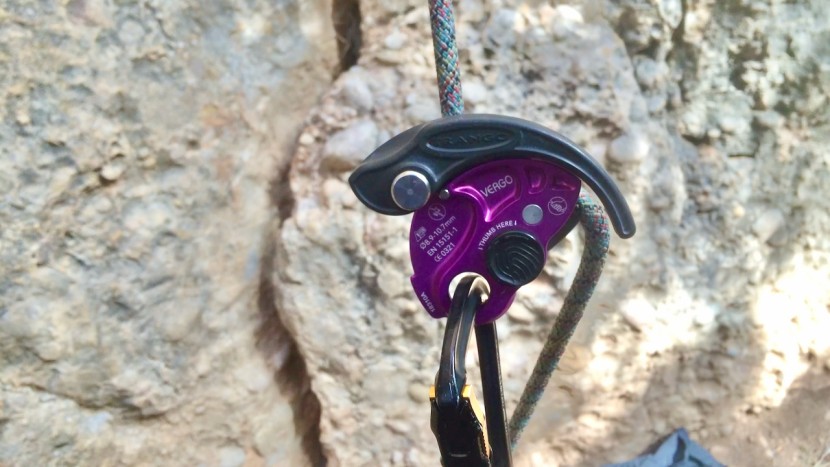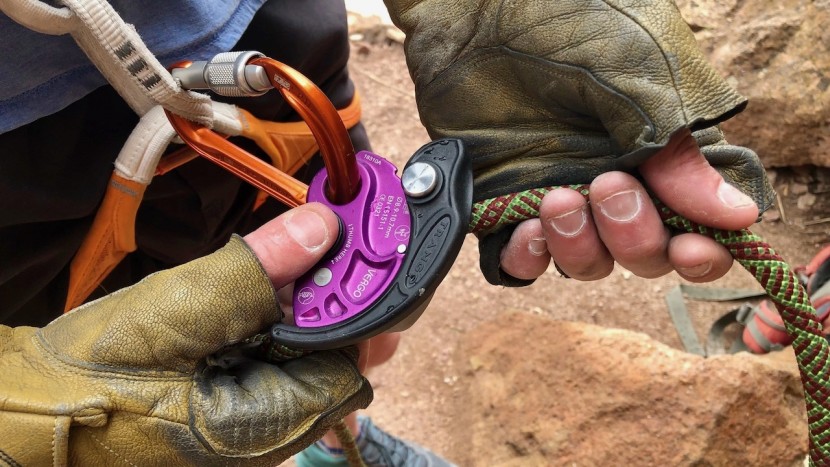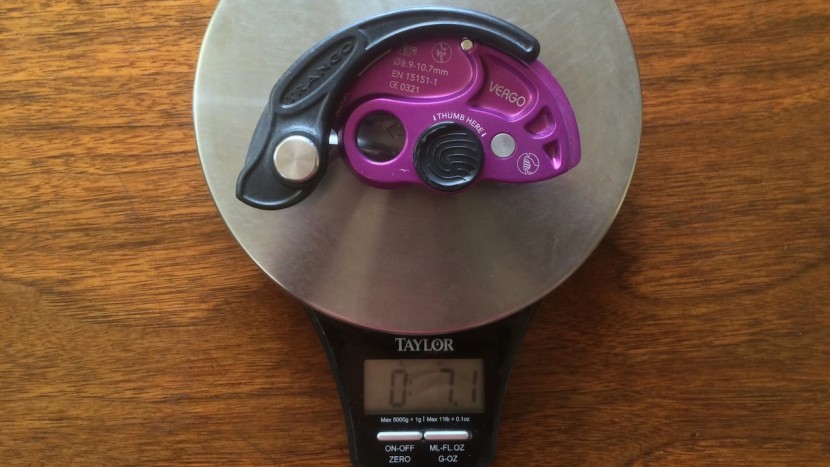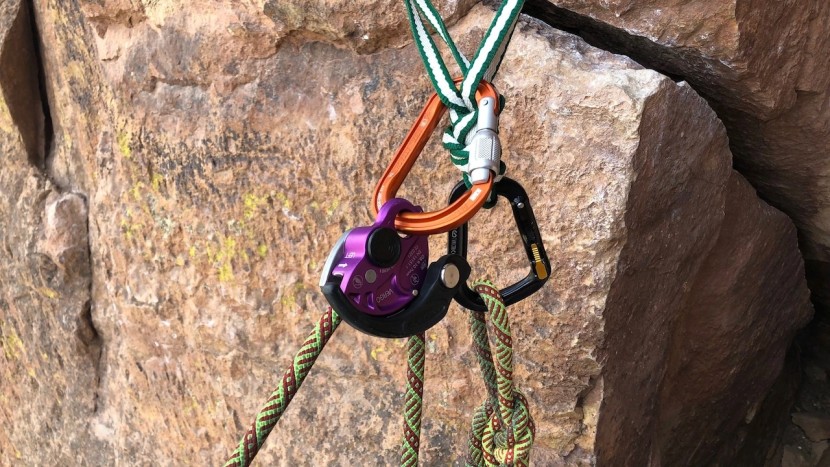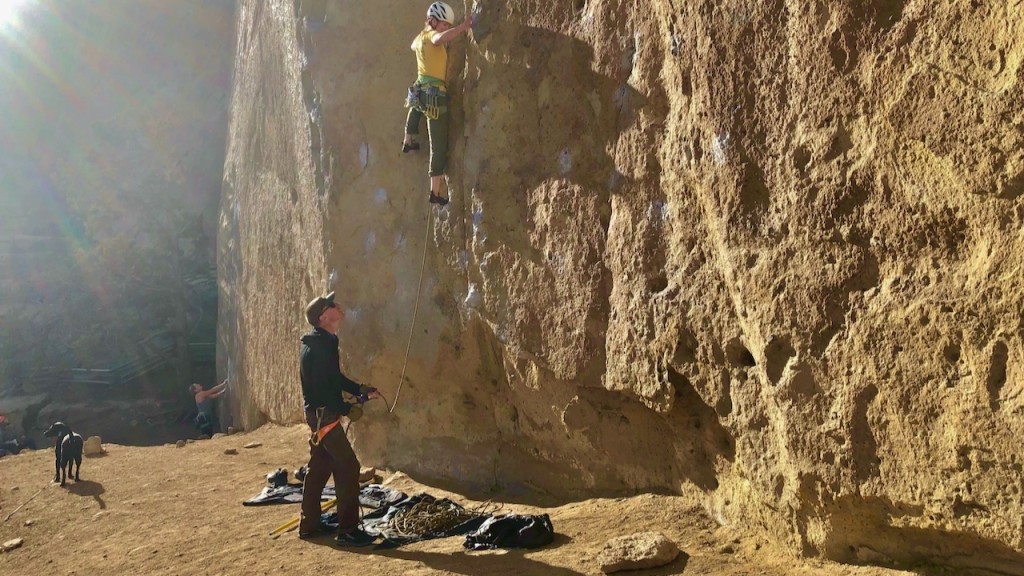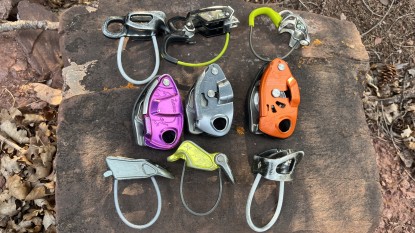Trango Vergo Review

Our Verdict
Our Analysis and Test Results
The Trango Vergo is compact and intuitive. One of the nicest aspects of the Vergo is that it doesn't bend the rope around an entire cam when unweighted, so there is far less friction inherent in the device when you are trying to feed out slack. With less resistance, the Vergo allows the user to not only feed out larger amounts of slack quickly with fewer arm motions but do so with less effort and friction. It also eliminates the need to hold the brake-assisting cam down to pay out slack, which is a major safety flaw in other devices.
Check out this video for instructions on how the Vergo works and how to belay with it correctly. Please don't mistake our discussion for actual instruction, and be sure you learn the device properly before use. While it does take a little bit of practice to get the new style of belaying ingrained, we found that compared to a lot of active assist devices, this one was quicker and easier to learn.
Catch and Bite
Rather than using a rotating cam inside the device to pinch the rope, as most active brake-assist devices do, the Vergo uses passive geometry to rotate the device around the carabiner clip point to add friction to stop a fall. We found this action to work extremely effectively. Unlike the Petzl GriGris, it does not have a spring inside the cam that works against the rope friction, so if anything, the Vergo is a bit grabbier and slightly quicker to lock up when pulled tight. For this same reason, it doesn't take virtually any time or give any slip when locking up, so you may want to adjust your belay style slightly (jump or slack) to allow for a more dynamic catch in certain situations.
One drawback of the Vergo compared to the new versions of the GriGris is that it can only be used with ropes down to 8.9mm, while single ropes can get as skinny at 8.5mm. Also, the device needs to be clipped to the harness in the opposite direction than most belay devices, with the brake strand closer to the belayer's chest and the climber's strand further away. This orientation ensures maximum friction due to angles of pull when a climber falls, but if you clip it to your harness the wrong way (easy for those not acquainted with the device to do), there is less friction, and skinny ropes may slip through without a firm grip on the brake hand.
Lowering and Rappelling
Lowering a climber with the Vergo, or rappelling a single strand rope, is quite easy. Simply pull a plastic lever to disengage the geometrical cam, and the rope begins to slide through the weighted device. Like most belay devices, this handle is on the left side. We found it hard to get the lowering speed just right during our first dozen or so lowers. But after some practice, it became easier to use. There is no anti-panic feature on the lowering lever. This means it is easy to open the cam up too much, allowing the rope to slip through very fast if unchecked by the brake hand (keep the brake hand on the rope at all times!). Like all active assist devices, this one can only be used with one strand of rope and is therefore not as versatile for multi-pitch climbing or rappelling as a standard tube-style device.
Feeding Slack
Feeding slack with this device is easy and intuitive, making it a reliable choice for belaying the leader. There is no special confusing technique to learn. When holding the device correctly in the right hand, with the brake rope running through the palm of this hand, slack can be pulled without much friction on the left side. This is very easy to master and is the only way to use this device, as there is no option to feed rope using two hands like a standard belay device. There is also no need to use the thumb to block the cam to allow slack to pass through, the orientation of the device is all that is needed. One downside is that lefties will have to use their right hand on the brake strand, which may be uncomfortable.
Weight and Bulk
The Vergo weighs 7.1 ounces, which is roughly in line with other similar, high-performing active assist devices. While it is not the lightest device, it is one of the most compact active assist devices, a bit smaller than a GriGri.
Auto Block
While it doesn't use a camming feature, the Vergo can be used to belay a second climber off the anchor in the same manner as the other active assist devices. It can only accommodate one rope but has a pretty smooth action with little resistance than some auto-block devices, which saves the elbows and shoulders on a long route. Worth noting is that while belaying the second up with the device clipped upside down directly to the anchor is okay as long as you keep the brake strand in your grip. To lower a climber, you will need to redirect the brake line upwards, in the opposite direction from the climber, to maintain the ideal friction and rope control.
Should You Buy the Trango Vergo?
The Trango Vergo is a solid tool that excels in lead belaying, and it costs less than other brake-assisted devices. So for single-pitch climbers on a budget, this is a great option. If you have a little more money to spend on a top-notch lead belaying device, we'd upgrade to one of the Petzl options.
What Other Belay Devices Should You Consider?
If you are looking for the best belay device for lead belaying, the Petzl Neox is our favorite, and the tried-and-true Petzl Gri Gri is even more versatile. For increased top-roping capabilities, the Petzl Gri Gri+ is a great option, and we also like the Edelrid Pinch for lefty lead belays. The Edelrid Giga Jul has added brake-assisting versatility for use with half or twin ropes, and the Black Diamond ATC Guide is a go-to for multi-pitch and rappelling at a low price.




